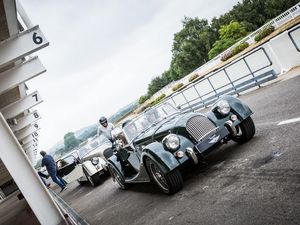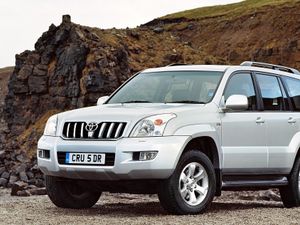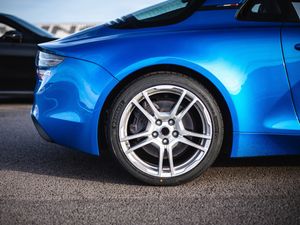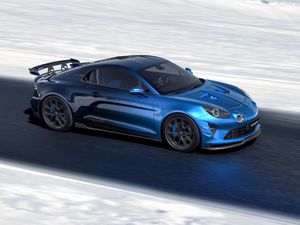Experiencing the historic Goodwood Motor Circuit
Goodwood Motor Circuit is one of the most historic tracks in the country. Jack Evans heads out to see what it’s like

Over the past couple of weeks, it’s likely that you’ve heard quite a lot about Goodwood. This year’s Festival of Speed packed high-octane thrills, and some awe-inspiring cars thrashing their way up the famous West Sussex hill climb.
However, we managed to sneak away from the crowds and out to the nearby Goodwood Motor Circuit — one of the most historic tracks in the country.

With the summer sun blazing down, the tarmac looked inviting. We’d been warned beforehand that should any rain appear, that the track would very quickly become as slippery as sheet glass. Thankfully, the few clouds that had appeared swiftly made their exit.
The Goodwood Motor Circuit was first opened in 1948, and since then things have changed very little. It’s still an incredibly narrow, fast and commitment-driven track with few run-offs. Drop a wheel onto the grass and the likelihood is that you’ll be saying hello to the barrier soon after. Over the years, it’s claimed a lot of metal.
Now we weren’t planning on being another visitor to the trackside barriers – even more so because JBR Capital, the event organisers, had provided four cars for us to drive, which were all dealer demonstrator vehicles destined to return to forecourts across the country. Even so, if you’re on a race track, you need to see what they can do, right?
The first, a Morgan Roadster, certainly looked the part at the historic track. However, a 3.7-litre V6 engine under the bonnet gives it modern sports car performance, with the sprint to 60mph taking just over five seconds and – on the straighter parts of the circuit – a top speed of 140mph almost within reach. It feels more than quick enough for the track, with the torquey engine giving us plenty of punch out of the corners, and enough poke to keep up with the various other vehicles lapping at the same time.

After having learned the track as best we can, we come back into the pits and swap the Morgan out for something completely different – a Lotus Evora. It uses a similar engine to the Morgan – a 3.5-litre V6 – but save for this the two are completely different. The Evora corners in a thoroughly modern way, and clings onto the fast, sweeping corners with little fuss. The warm track temperature means that the tyres are almost immediately sticky, too.
From there we switch back into a Morgan, though rather than the powerful V6 Roadster, it’s the Plus, which uses a 2.0-litre engine for drive. Power is considerably down on the Roadster with 154bhp as oppose to the V6-driven car’s 280bhp. However, it is incredibly light weighing in at just 927kg dry, and is gifted with wonderfully direct unassisted steering. You can tell exactly what the front tyres are doing, and while it may lack the out-and-out performance of its more powerful stablemate, it corners eagerly and feels perfectly at home at Goodwood. It feels the closest to the vintage race cars which lap the circuit each year at the Goodwood Revival event.

Finally, things get serious. Our next and final track car is the Lotus Exige Cup 430. Featuring a huge wing, slick track tyres and a stripped-out interior, it’s the real deal when it comes to circuit-bias road cars.
Capable of hitting 60mph in 3.2 seconds and able to generate 220kg of downforce, it’s a hugely capable sports car. Out on the track, it feels the sharpest out of all the cars we’ve driven, and delivers an almost incomprehensible amount of grip in the bends. In the warm temperatures, it almost feels grippy enough to be driven upside down.

Though the Exige is hardly a wide car, it feels really quite large on the ribbon-thin circuit, particularly in contrast the more compact Morgans. It’s also fitted with an incredibly loud exhaust, which exceeds Goodwood’s imposed noise limits. We’re asked to lift off the throttle at certain points around the circuit to reduce the car’s racket when travelling past noise sensors. It’s an odd sensation to have to let off the gas when exiting a corner, just when you’d usually be giving it as much as you can. We don’t want to get in trouble though.
Then, just like that, the chequered flag arrives and we’re called – reluctantly – back to the pits. If we’d had our way, we would’ve been out in the Exige for many hours more.
It’s been an exciting and intense introduction to the Goodwood Circuit. Though we’d love to be able to keep lapping it time after time, the short experience that we had of it showed it to be one of the most interesting and fast circuits in the UK – despite being close to 80 years old.





